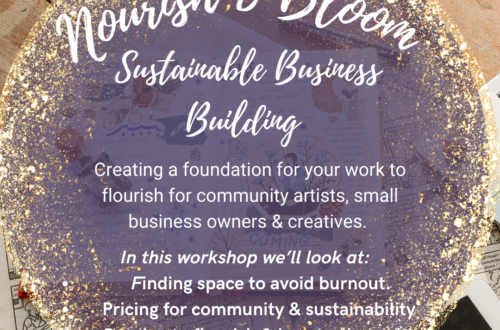How-To Guide for Stylish Accessibility Aids: Disability Equipment & Mobility Chic
I believe stylish accessibility aids, dreamy disability equipment and cool mobility chic can be empowering and allow us to reclaim our identities in the maelstrom of loss, pain and medicalisation. But this is still a radical view.
(Like this? Pin it for later!)
I think I annoy my health professionals.
I sometimes get the feeling that they see me as a little ditzy or superficial (until I start on about pH balance or calcium absorption, then they just seem bemused). This may be because, whenever we are talking about mobility aids, crutches, splints, slings, hoists, adaptions – anything really, my first question is generally “What colour is it?”.
This is usually a stumper. Most professionals have never been asked it before.
Maybe it’s just me. Maybe other people are too busy being worried and think about these things later. Or perhaps it doesn’t occur to people to ask. But whatever the reason, it seems to be one of my roles to crusade for stylish mobility aids.
Disability aids and adaptions are part of my life (as they are in other peoples’).
[Tweet “I want a beautiful life, and I want what I have in my life to be beautiful.”]I see no reason why the aids I need should be any different. Some people need climbing gear to climb a mountain, I need a wheelchair to leave the house. Sure, the equipment isn’t always my ideal, but some of the things they’ve given me have just been depressing.
Grey Gloom
Grey slings. Really? Grey?
Both before and after being ill I’ve spent time buying clothes. But at no time whilst shopping have I ever exclaimed “Oh wow! Grey! Oooh, and it comes with bright yellow edging!”
We aren’t talking about the elegant, understated grey of dark pearls or the soft grey of incense smoke. The slings were so grey they looked grubby.
Yet when hoists were installed so I could be safely transferred from bed to wheelchair, the only sling option I was given was grey with yellow edging. I felt insulted.
This seemed to carry the implication that, because I was ill and needed the equipment, I had to drop all standards and just put up with grey.
What’s Your Stance?
There is a difference between trying to disguise disability through shame and wanting our environment to be enjoyable.
I choose the latter.
I Can’t Believe She Thought That About Me
I spoke to an NHS therapist some time ago, I’d been referred after a car accident we had.
In the course of our sessions, she said to me one day,
“Well, your life was hard enough before the accident. I mean what 23 year old wants to be cared for totally by their husband and have to be pushed around in a wheelchair all the time?”
Her attitude totally shocked me. Is that what people saw? Is that ALL they saw?
Yes, I was 23, a wheelchair user and my husband cared for me full time due to the multiple health challenges, but that is only part of me. I am much more than that.
You Are Looking at the Wrong Thing (it’s Me, Not the Chair)
I suppose I could choose to let the challenges limit me but even when I was bed bound and couldn’t speak, I think I saw myself more positively than this. I mean sure, I couldn’t really think straight with the pain, but I still got my husband, to put body glitter on my arms every day, I was still me.
I designed my affirmation cards when I was bed bound (now in production for Healing Boxes CIC).
I got a B.A. Hons
I grew vegetables by having my husband plant them in pots outside, then photograph them so I could direct him on weeding/watering/harvesting.
This was all really tough and the triumphs happened over a long period, but I was me underneath all of that. I still am.
Mobility Magic
So why would I accept mobility aids that don’t make me feel empowered?
I know it can be hard – when I had my first wheelchair I cried and cried and was so embarrassed. I was 18 and I was ashamed to need a wheelchair.
Now I see my wheelchair as the freedom to get me to go places I couldn’t go otherwise. I can sit in it proudly.
(Also it is super cool, metallic sapphire blue with a purple cushion covered with organic fair trade Welsh cotton. Check out my current wheelchair here.)
It is okay to want things to look nice. I know there are more important things out there but our lives and our happiness are important too. Just because we are sick we do not have to accept products that we wouldn’t accept if we were not sick.
We choose frames of glasses, we choose styles or coloured bands of braces, why are accessibility aids any different?
So here are some ideas about things we have done to individualise and personalise medical aids and accessories:
1. Ask for Stylish Options
Ask if you can have it in another colour/size/style. Really, ask.
I could have settled for transfer slings that were grey with yellow edging, but by asking (and being persistent) I was finally given a lime green sling with sage corduroy lining. I liked it. It didn’t clash with my wheelchair, or remind me of hospital and I was able to feel like our home was much more like a home, and less like a disability equipment showroom.
If they say no, ask why not? To me, people always say ‘no-one wants them in colours’ or ‘people want them to be discreet’. I ask you, what is more discreet? Nice black/subtle navy? Or a clumpy ‘flesh coloured’? (I could also say so much on their idea of the colour of peoples’ flesh, or the concept that everyone is that supposed ‘white’ colour, but that would be another blog post entirely.) Take in pictures of what you like, show your style, print off this article and take it with you, see what happens.
2. Adapt and Rock Mobility Chic
Get out the spray paint.
No one ever seems to pick up the equipment they give to us. When we got a new wheelchair, I couldn’t get rid of the old ones. The wheelchair service would not come and collect them. The same thing happened with the bath lift (we now have an adapted wet room). In the end, we rang and told them that if they were not picked up in a month they would be donated to the Red Cross. Well, they went to the Red Cross.
With all the fussing about equipment, I thought it would just be more straight forward to ask the hospital “Are you ever going to ask me for these grey splints back?” They said no. So, I did some colour design of my own.
3. Go the extra mile
Before I got a coloured wheelchair everyone told me you can’t get them in Wales. In the end I said, “If you give me another black wheelchair I will have it sent to a car spraying facility, have them spray it the colour of my choosing as they would a car and then if you ever want it back I will have it re-sprayed black again before I return it and there is nothing you can do about it.”
Not long after that, there was a knock on the door and a man from the wheelchair service turned up. One of the first things he said was “I hear you don’t like black” and, to my delight, a sapphire blue wheelchair arrived.
Ask if they can ask the manager, can they call the manufacturer, can you opt to upgrade? Can you contribute your own money? Can they please check? Let them know what it means to you, why you need this, advocate, “I use this every day and I want to feel happy in it”.
Let’s ask and find out, this is your life. You may use this aid every single day, your approval of it matters.
4. Research Disability Equipment Options
Look online, ask in support groups, look for modifications, Google, see if anyone has done anything cool on any of these sites:
Broken Beauties: Slings, walkers and crutches with style
Trekinetic Beyond the Boundaries All Terrain Wheelchairs: Awesome, thinking outside the box wheelchairs with 3 wheels, powerchairs that fit in an unadapted car and can cope with pretty much all terrains.
Arm Candy Warrior Wear: Fashion sleeves to cover compression sleeves for people undergoing treatment for cancer/canser and/or who are survivors and have lymphedema
Healing Threads: Dignified and stylish patient and recovery wear
Rolling Divas: Wheelchair covers and hubcaps
Inga Wellbeing: Comfortable and attractive patient clothing
Alter UR Ego: functional and fashionable, wheelchair adapted jeans
Sometimes some pretty awesome things turn up on Etsy.
These are just some things that I know of/have used. Create your own stylish healing love list.
5. Think outside the box
Come up with your own adaptions, workarounds and creative ways.
Add to my list.
Blog about this yourself.
Think, create, live.
You are worth it, this is worth your time. You deserve to look and feel proud and yourself.
These are my ideas and opinions, meant to include not exclude, what are yours?
Do you know someone who’s looking for stylish, empowering mobility aids? Email this piece to them & encourage them to consider these 5 ideas, first.
What are your favourite stylish aid resources or adaptions? Let me know in the comments!
P.S Want more accessible style tips? Check out my new ebook, Beyond the Boundaries: Finding Freedom & Fulfilment Within Four Walls. Self-Care Edition for accessible style strategies, how-tos, worksheets, printables and exclusive interviews!
P.P.S Like this post? You may also enjoy Disability Creativity: Adapting Clothing for Accessibility part 1 and part 2 and What to Wear All Day Instead of Pyjamas.





